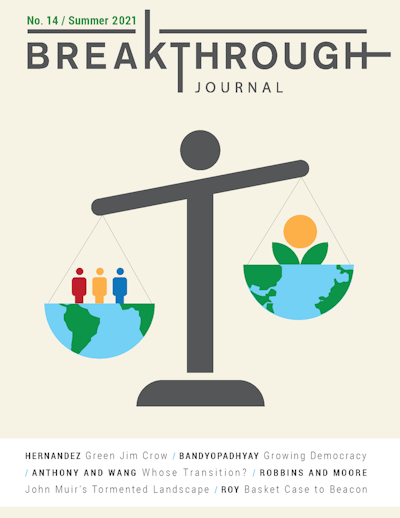Not in My Backyard
The Forgotten Hazardous Waste
-
-
Share
-
Share via Twitter -
Share via Facebook -
Share via Email
-
Relocation brought many changes when I retired and moved with my spouse from a suburb of Washington DC to a suburb in Nassau County, NY. Along with some 80 million other US residents, we were now responsible for an onsite waste treatment system (OWTS). In our case, as for most, that system included a septic tank. From now on, each flush of the toilet brought a conscious act of waste management, rather than casual abandonment.
Even before we had moved in completely, our new status as domestic-discharge custodians was painfully apparent. The wheel of a delivery truck punctured the driveway and fell into an old septic tank that had been on the property when it was a summer theater in the 1950s. In 1964, the structure had been rebuilt as a single-family house and it had been in use for well over 50 years. Now it was our home.
We first needed a crane to free the truck and a contractor to remove the roof of the old collapsed tank and the driveway above it. And, of course, we also needed a new septic tank built. Years later, when we realized that the newer working tank had not been serviced in some time, we called another company to vacuum out and haul away the settled solids, the liquid having appropriately percolated away under the adjacent grass. Total cost for these modest adventures in privileged suburban living? Around $8,000, not counting time and irritation. Fortunately, we could afford them.
But what if we couldn’t? Or suppose a conventional septic system could not be made to work reliably due to inappropriate soil conditions or a high water table? Nearby infrastructure upgrades have brought a municipal sewer connection closer, but it remains a couple of blocks (and probably more than a couple of years) from reaching us. And whatever our future domestic waste management might involve, I’m fairly certain we will avoid both the threat of incarceration and the need to discharge our flushed toilets directly onto or into the ground outside.
Low-income African Americans in Lowndes County, Alabama, are facing variations of this second, much less happy scenario. They are the focus of Waste: One Woman’s Fight Against America’s Dirty Secret by Catherine Coleman Flowers.Catherine Coleman Flowers, Waste: One Woman’s Fight Against America’s Dirty Secret (New York City: The New Press, 2020)Her title, though, is a bit misleading because at least half of the book comprises an entirely waste-free but decidedly charming memoir. It takes us on an educational and employment odyssey that pulls its resilient and adventuresome author from a substandard (and horrifically managed) southern rural high school through her time at various colleges and jobs, including a stint in the military.
Throughout her life, Flowers increasingly encounters an impressive array of prominent and famous people. However, her life arc brings some bad luck: She misses her shot at an Ivy League college; she makes her share of what the late Representative John Lewis famously dubbed “good trouble” – making some enemies along the way; a head blow renders her husband amnesiac for a time; and she arrives in Washington DC to attend a law school just as it announces its closure. And so, for a time, she teaches school instead.
But her persistence, networking skills, and entrepreneurial pragmatism pay off. How many other rural, deep-south, environmental justice activists would have engaged enthusiastically with both Alabama Republican Senator Jeff Sessions and Black conservative Robert Woodson, founder of the National Center for Neighborhood Enterprise (now the Woodson Center)? And yet it is the Woodson contact that leads nationally syndicated columnist William Raspberry to pen a March 2002 piece highlighting the horror of untreated toilet discharges in Lowndes.William Raspberry, “Civil Rights Failure,” The Washington Post, March 18, 2002, https://www.washingtonpost.com/archive/opinions/2002/03/18/civil-rights-failure/e203fe82-a0f0-4285-9215-617ef3035ae3/
“It just blew my mind,” Raspberry recounts Woodson saying. “People living without sewers or septic tanks, with waste running off into an open ditch. A third of the residents living in trailers, which start losing value the day they buy them, because they can get loans for trailers but not for houses on land they own. Kids attending ramshackle schools with coal-fired furnaces and as many as a third of them spending time out of school with respiratory illnesses.
“Lowndes is a metaphor for what I've been saying for decades – that the civil rights-poverty-political complex has failed the least of God’s children: the poor, especially poor blacks.”
One need not buy into Woodson’s critique of the civil rights movement to see this as yet one more instance of the underlying poverty and lack of opportunity that has been aggressively rebranded as “environmental” in recent decades by activists like Flowers.
She has our attention, for a while at least, with her organization, her media appearances, and her book. Flowers also brings to bear her stature as a MacArthur “genius” awardee and founder of the Center for Rural Enterprise and Environmental Justice, which has nearly a dozen institutional collaborators as well as Jane Fonda on its board. The young Black southern woman of frustrated ambitions appears thwarted no longer.
Annoying lapses in the book, however, merit brief recitation. One wishes it had an index and been more carefully edited. For example, Joe Lieberman, not Bill Bradley, was Al Gore’s presidential running mate in 2000. Daniel Patrick Moynihan’s much-ballyhooed “benign neglect” memo of 50 years ago was not at all intended to punish cities where Blacks had rioted.Moynihan explained himself repeatedly at the time, and it is worth rebutting the misperception even half a century on: “The subject [of race, he wrote in a memorandum to the president dated January 16, 1970] has been too much talked about. The forum has been too much taken over to hysterics, paranoids, and boodlers on all sides. We may need a period in which Negro progress continues and racial rhetoric fades.” Reprinted in Steven R. Weisman, ed., Daniel Patrick Moynihan: A Portrait in Letters of an American Visionary (New York: Public Affairs, 2010) 211-215.And the first four words in the book, at the top of Bryan Stevenson’s foreword, “our planet is dying,” were momentarily wince-inducing for this reader.
On the other hand, Flowers is on to a problem worthy of our attention, one that may arouse disgust but also that increases disease risk, such as hookworm and other parasitic hazards. Far more the memoir of an evolving striver than policy treatise, Flowers’ book, by necessity, addresses in unsystematic ways the available pathways to fixing and preventing the kind of problem that bedevils Lowndes County and similar places. Flowers writes that “we want to know how widespread the problem is, and we want solutions – including new affordable technology.” A recent paper in the journal Water Research confirms that we also do not have a good handle on the scale of the problem of so-called “straight pipes” that take raw household sewage into the ground from homes lacking effective OWTS.Jillian Maxcy-Brown, et al., “Making waves: Right in our backyard – surface discharge of untreated wastewater from homes in the United States,” Water Research 190 (2021): 116647. https://doi.org/10.1016/j.watres.2020.116647
One thing we know for sure, though, is that the problem is not limited to the realm of racial disparity. And as with climate change, it would seem, we do not yet have all the technology we need. Indeed, near the end of the book, when elaborating on the quandary facing her friend, Lowndes County resident Pam Rush, there is a brief but tantalizing passage that allows us to see a hint of where environmental justice enthusiasts and ecomodernists might make common cause:Flowers, Waste, 198.
“Getting a septic system installed for her was a case study in how complex the issue is in Lowndes County and why it is an expensive option for many there. While doing the perc test, the engineer struck water while digging just twenty inches into the ground. Because the water table was so high, Pam would need an engineered system. The first bid received for the installation of the system on a half-acre of land near where she currently lives was $28,000. That shows why so many of her neighbors are straight-piping. It also underscores the need for affordable technologies.
“The fact is that there is no one-size-fits-all wastewater system. What works in one kind of soil won’t function for long in another. We have to keep searching for new technology and new methods of disposing of human waste. I believe we will find solutions if we can direct the energies of academics, business, government and philanthropy toward finding them, and that’s where public policy comes in: to make this issue a priority, set standards for how we will live in the United States and provide incentives for innovative solutions.”
I trust that the Bill & Melinda Gates Foundation, working precisely on such matters, is listening. In addition, though, an ecomodernist outlook might prod us in directions that Flowers may find less welcome. Shouldn’t the people of Lowndes County or places like it be encouraged toward greater residential concentration? That would certainly make conventional sewer construction, operation, and maintenance imaginable, at least, along with its funding. Is that also not an Earth-sparing, poverty-alleviating path for us, especially given that we already know how to build sewer systems?
Forty years ago, my first job out of graduate school was serving as staff assistant on a now-forgotten presidential commission. During a chat one day with a prominent economist, the topic turned to poverty reduction. Some locations, he believed, were just destined to be too hard to make habitable. “Now, you take someplace like Chad,” he opined dryly. “People just shouldn’t live there.”
One wonders how such thinking would resonate with Flowers.

